Unless your lab is one of the lucky few that can afford an automated pipetting machine, you can look forward to many hours of tedious liquid handling activities as part of your day to day laboratory routine.
Given the role that liquid handling plays, this short article is designed to point out a few of the different options on the market and how they can be incorporated to make your liquid handling more efficient and comfortable.
Within the category of manual liquid handling, there are five basic types of devices that are used:
Fixed volume pipettes, adjustable single-channel pipettes, a djustable multi-channel pipettes, r epeating pipettes and serological pipettes (also called pipetting aid or “pipette gun)
Fixed volume pipettes –
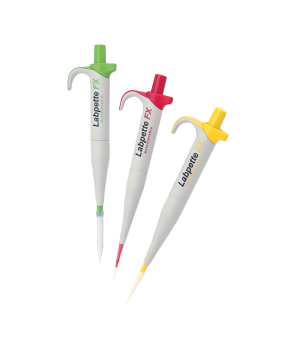
These are very simple devices that deliver a preset volume of liquid with each act of dispensing. They utilize the familiar “two-stroke” method for drawing up and releasing the liquids.
Stellar Scientific offers the Labnet series of fixed volume pipettes which come in twenty-seven different volumes ranging from 2uL to 1mL. Perfect for students or research labs with constant and predictable liquid handling needs.
Adjustable single-channel pipettes –
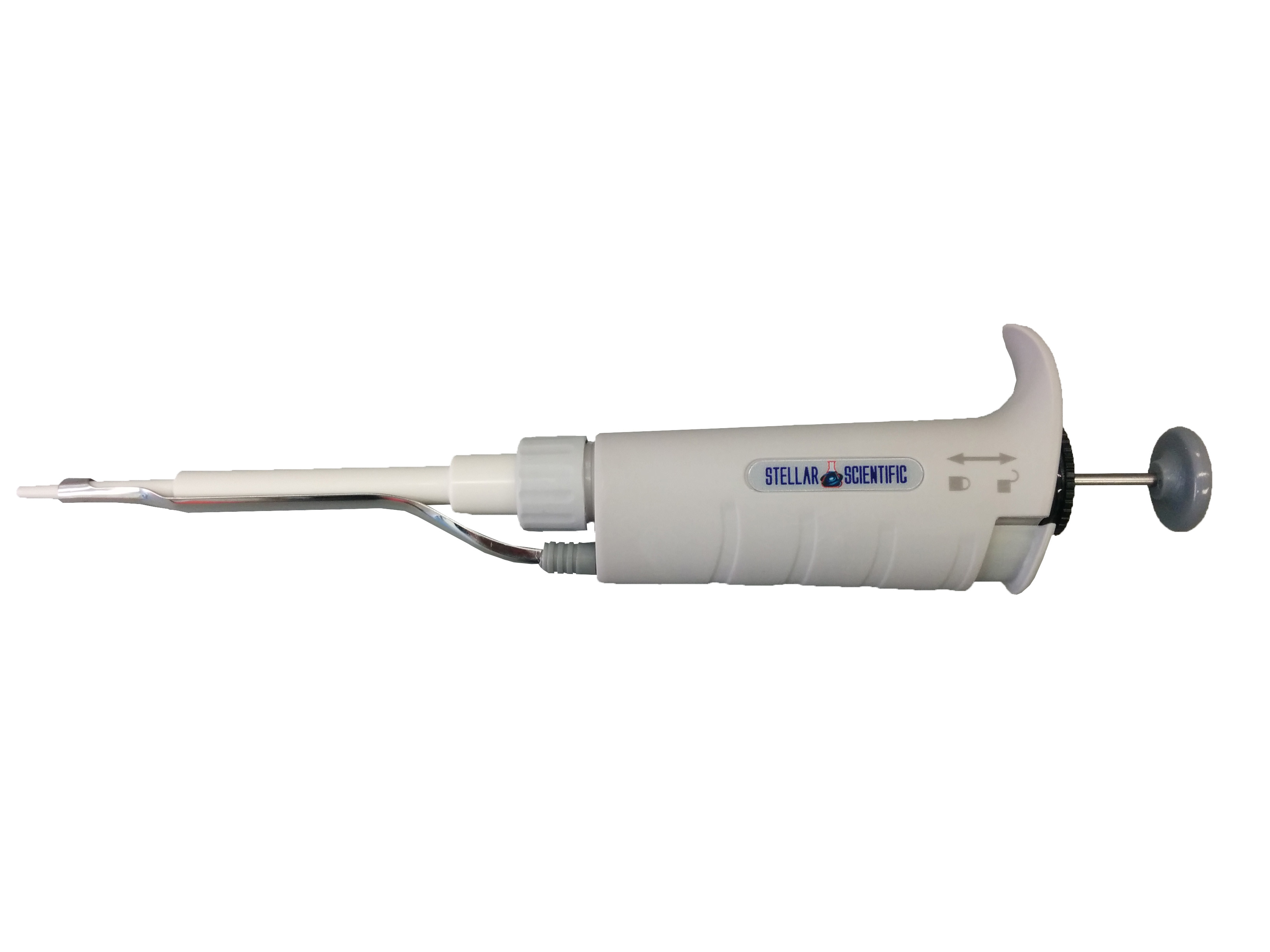
These comprise the majority of liquid handling tools on the market. Each manufacturer adds their own spin or twist, but all are basically built on the famous Gilson and Rainin model – a vertical, elongated device that uses thumb pressure to draw up and expel liquids using a disposable pipette tip.
To increase comfort and reduce injury, some companies have incorporated features that reduce the amount of pressure needed to engage the plunger. Of note: The Rainin LTS (Light Touch System). Drawbacks for this particular brand is the requirement to purchase proprietary pipette tips which can be costly.
A more pedestrian, but also useful, feature are finger-hooks which allow the user to loosen their grip frequently without dropping the pipette. This “grip and release” action reduces muscle strain and decreases the likelihood of developing carpal tunnel or tendinitis.
Most single-channel pipettes are autoclavable and feature some version of a locking mechanism to prevent “drift” that can produce inaccuracies with prolonged pipetting. Even with the best maintenance and care, pipettes should be routinely calibrated. There are companies that offer this service, but it can be done easily in-house with equipment found in most basic labs.
Take a look at this wonderful online tool by Calibrate it to see how simple it is.
If you are concerned about developing muscular-skeletal injuries or already have one, then the Vista Lab Ovation series is a must. The only genuinely ergonomic pipette, this device has been clinically shown to reduce or completely eliminate pain associated with repeated liquid handling.
With the recent release of a mechanical version, the Vista Lab Ovation is now priced competitively enough to be seriously considered by anyone in the health sciences fields.
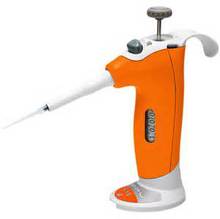
Free two-week demos are easy to set up, and come with a prepaid return label that makes it a snap to try before you buy.
Select a reasonably priced Stellar Sci Propette or Propette starter kit (includes four pipettes and a carousel) or choose from the Vista Lab Ovation series when purchasing your single channel adjustable pipettes.
Adjustable multi-channel pipettes –
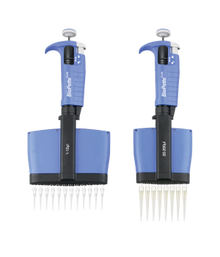
Built on the same design as the single channel pipettes, these incorporate a wide manifold that allows the user to fill eight or twelve pipette tips simultaneously. In principle, the multi-channel pipette should increase throughput, but in practice, they can be notoriously difficult to work with.
Getting all eight or twelve pipette tips to fill precisely and accurately requires each tip to be seated correctly on the pipette cone. To achieve this uniform seal requires patience and practice, and making adjustments from one’s normal methods of tip-seating. Compounding the difficulties, users often apply so much force that the disposable tips become difficult to remove and slows down the process.
And, multi-channel pipettes cannot be easily matched with all “universal fit” pipette tips. Given the above, it is a very good idea to request a demo unit before making your purchase to be certain you have the right device for your tips.
Stellar Scientific offers two brands of multi-channel pipettes which we have tested extensively and found to offer the best fit with the widest range of tips, and also to be comfortable to use.
The Labnet family of multi-channel pipettes are based on the Gilson design and are fully-autoclavable. Available in a range of volumes and in both eight or twelve channel versions.
The Globe Scientific Diamond Advance multi-channel pipettes use a unique barrel shaped core that is exceptionally light and easy to grip. They are color coded for quick identification. While not fully-autoclavable, the manifold can be removed and autoclaved separately should the need arise.
Repeating pipettes:
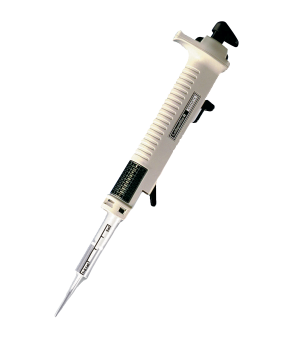
Sometimes called “combi-pipettes” because they combine the features of a single channel pipette with the high-throughput productivity of a multi-channel device. However, unlike a multi-channel pipette, there is only a single “tip” employed at a time. The tip contains a chamber, or reservoir, which stores a large volume of liquid. The user depresses the thumb button and dispenses a pre-selected amount over and over again until the reservoir is emptied.
Stellar Scientific offers the Labnet brand Repeating pipette and a wide assortment of tips (called syringe tips) up to 50mL in volume.
Serological pipette controller:

These devices are used when transporting larger volumes of liquid (up to 100mL) at a time between two containers. Whereas they once were electrical, more and more are now being designed to be cordless with rechargeable batteries that can last as long as eight hours.
The controller is shaped like a gun and comes with several standard features which include: a .22um filter to protect the device in the event of overfilling, intake/expel buttons and some sort of battery-life indicator.
More advanced models offer speed control dials for more precise liquid handling and even a graphic interface to display relevant data.
Depending on the weight of the rechargeable battery, some pipette controllers can become quite heavy. This results in increased stress on the wrists with prolonged use.
Our Stellar Sci Pipette Controller weighs just 9 oz. and sports an eight-hour battery life.
If your laboratory does not have liquid handling needs beyond 10mL, then you should consider the Vista Lab Ovation for comfort and safety.
In conclusion, there are many excellent choices for your laboratory liquid handling needs. While many would argue that the differences between them are negligible, the conscientious user will invest time to make the best choice. Your hands and wrist will thank you!

